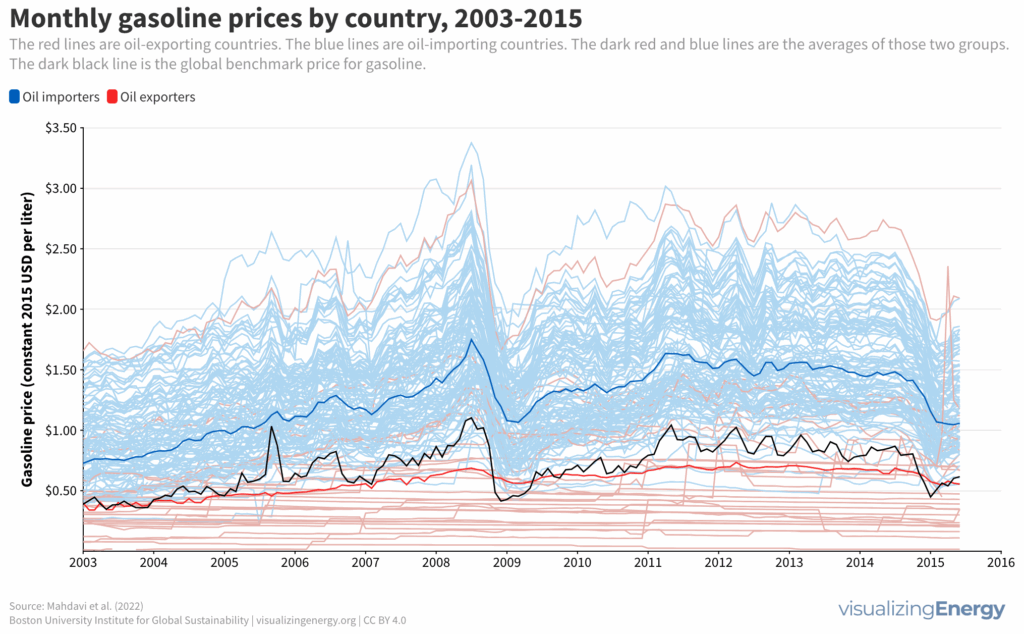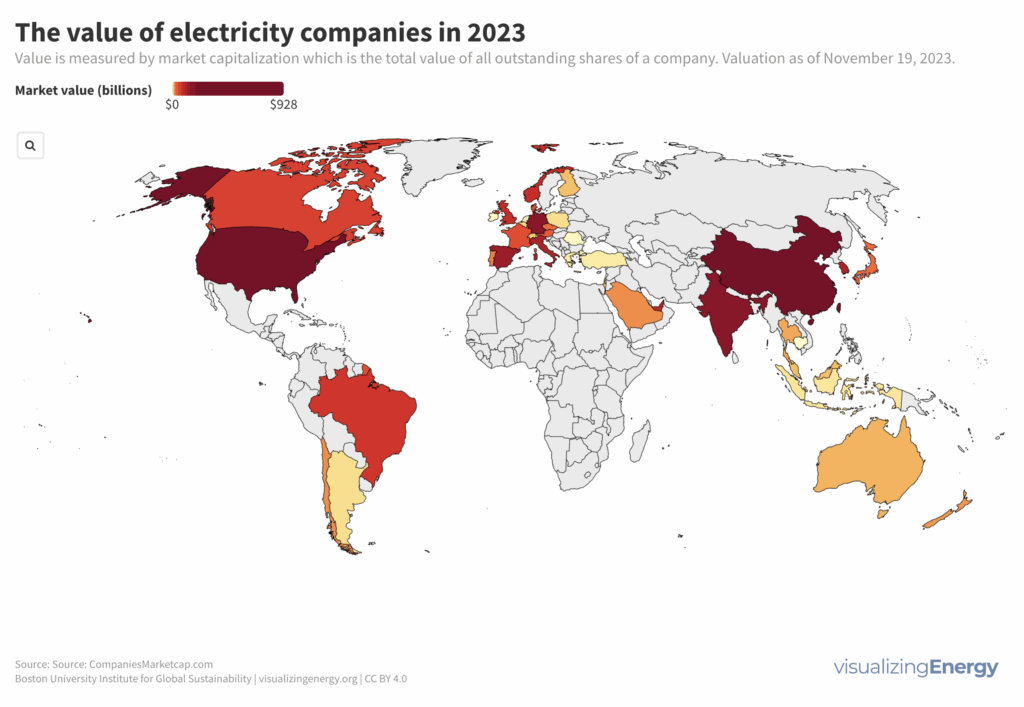What is the relationship between energy use and economic output?
Gross Domestic Product (GDP) measures the dollar value of the final goods and services produced in a country. Changes in GDP are the most widely used indicator of a country’s overall economic health. There are four components of GDP: Data PNG Embed Code Dividing a country’s GDP by its population is a common way to […]
How has the knowledge economy affected energy use?
Digitalization uses digital technologies and systems to improve, transform, or create processes, operations, and services. It involves integrating digital tools and technologies, especially computers and the Internet, into various aspects of business, society, and everyday life. With globalization, dematerialization, and decarbonization, digitalization is a “megatrend” producing sweeping changes in society and the environment.1 What is […]
What nations profit the most from fossil fuels?

The well-being of a nation’s population is determined in part by how the nation’s wealth is managed. Wealth has two principal components. The first is the stock of physical assets such as machines, buildings, and power grids, and human assets such as labor, knowledge, and social connections. The second is the stock of natural assets […]
Government expenditures on environmental protection

National governments began spending on environmental protection in the late 19th century, escalating after World War II due to pollution concerns. Key legislation emerged worldwide, including Japan’s 1967 law and the U.S. Endangered Species Act. In 2023, EU spending on environmental protection totaled €142 billion, highlighting diverse national priorities in tackling environmental issues.
Why are gasoline prices lower in oil-exporting countries?

Government policies significantly influence gasoline prices, leading to disparities across countries. Most nations tax gasoline, while some subsidize it, especially oil exporters. Higher income countries typically impose steeper gasoline taxes to harness revenue. There’s a growing call to reduce fossil fuel subsidies to curtail greenhouse gas emissions, advocating for carbon pricing to promote clean technology.
How does public finance support energy?

The global energy system encompasses diverse infrastructure requiring extensive investment, with USD 2.8 trillion spent in 2023. Public finance significantly supports energy projects, where fossil fuels received 56% of funding from 2013 to 2022. Clean energy finance increased until 2021, highlighting varying regional priorities and the dominance of large projects in funding distribution.
Which banks fund upstream oil and gas?

Global oil and gas consumption increased by 14% from 2013 to 2023, posing a challenge to limiting global warming. JP Morgan Chase led in financing upstream oil and gas activities, providing over USD 67 billion to various companies. Concerns were raised about banks’ commitment to reaching net zero emissions and prioritizing policies allowing the purchase of carbon offsets, which may promote greenwashing. Some oil and gas companies have weakened their commitments to reduce investment in upstream projects.
Where are the world’s most valuable electricity companies?

Electricity plays a crucial role in modern society, constituting 21% of energy use in the EU in 2022 and expected to grow due to initiatives in transportation and heating. The 220 largest electricity companies globally represent about 3% of the total market cap of publicly traded companies. This industry is highly concentrated, with just five companies holding 20% of the market cap.
Where are the world’s most valuable oil and gas companies?

Oil and natural gas make up 55% of global energy use, with the top 350 companies holding a combined market cap of $7.2 trillion, comprising 7% of the world’s largest companies. State-owned enterprises control 90% of the world’s crude oil reserves. Just 8 companies hold 50% of the market cap.
Where are the highest prices for carbon?

Many experts advocate for “putting a price on carbon” to reduce greenhouse gas emissions and address climate change. This involves capturing the external costs of emissions and linking them to their sources through a price. Approaches include emissions trading systems (e.g., “cap and trade”) and carbon taxes. Currently, 73 initiatives cover 23% of global emissions, with examples in South Africa and the European Union.
